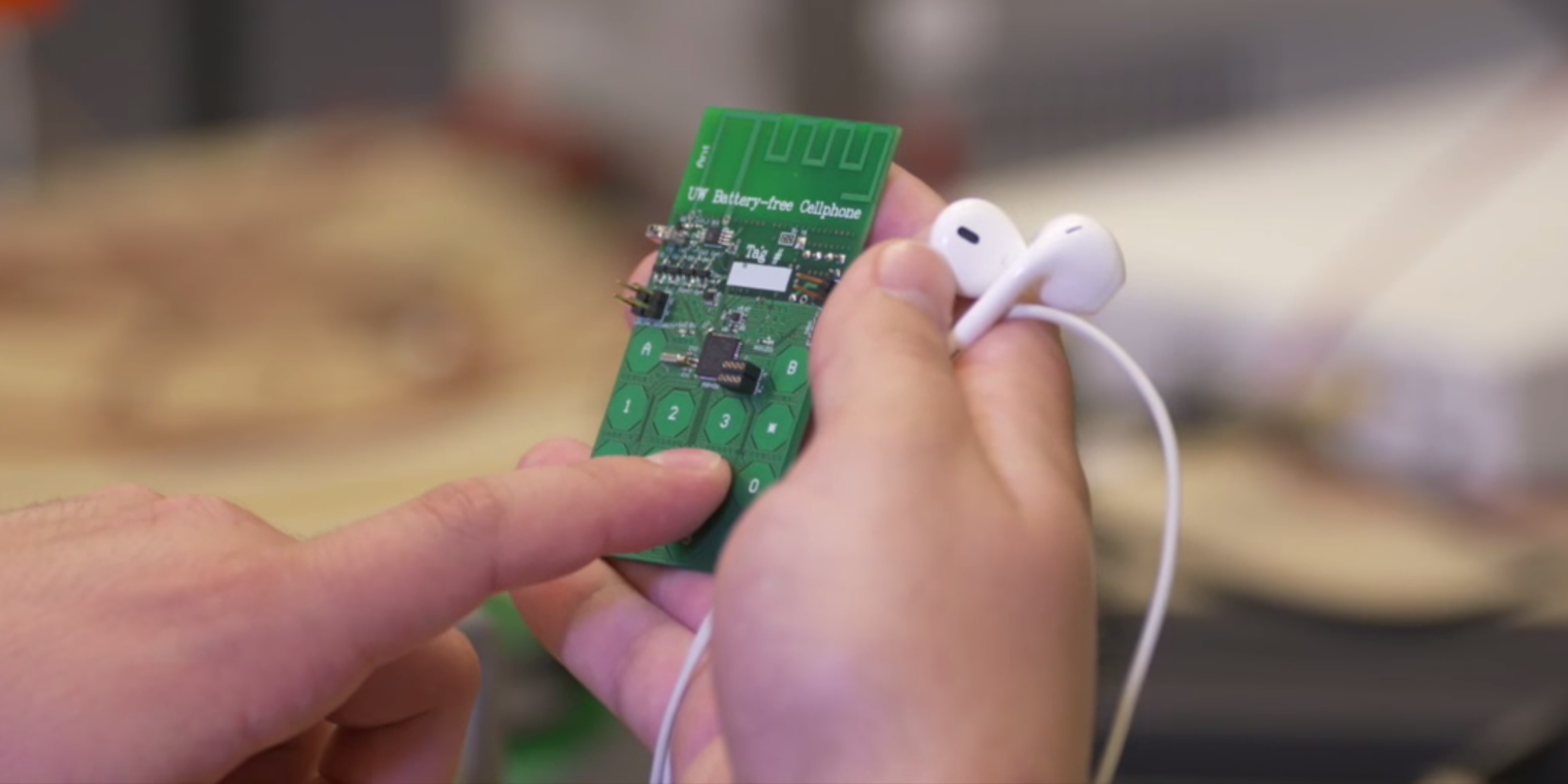Despite the remarkable enhancements made to smartphones in the past few years, battery life remains a frustrating limitation. That could eventually change thanks to new research.
Manufacturers have tried to solve the problem of battery capacity by stuffing their devices with the largest lithium-ion batteries possible. Some have seen mild success. Others have failed miserably. But no one has been successful bringing our modern devices back to the glory days of the everlasting brick phone.
So what if, instead of creating the biggest battery, we stopped using them altogether?
That’s the idea behind the battery-fee phone created by researchers at the University of Washington. The prototype device was built with off-the-shelf materials on a printed circuit board, and it runs on a combination of wireless power and tiny ambient light charges.
The phone operates by harassing power from radio frequency signals sent by a nearby custom base station. Researchers believe their proprietary technology can one day be integrated into standard cell towers or Wi-Fi routers. Although we don’t know for sure what frequency the phone powers itself with, the transmission of energy will be much lower than what is sent on today’s phones because of the simplicity of its operation and requirements for low-power data transmission. That should help dispel any concerns that this RF-powered smartphone could exposure its users to higher amounts of cancer-causing electromagnetic radiation.
Another way the device collects power is with ambient light using tiny photodiodes, or a device that converts light into electric current.
“We’ve built what we believe is the first functioning cellphone that consumes almost zero power,” Shyam Gollakota, an associate computer science and engineering professor at the University of Washington, told UW Today. “To achieve the really, really low power consumption that you need to run a phone by harvesting energy from the environment, we had to fundamentally rethink how these devices are designed.”
While it’s no smartphone, the device can transmit signals to the base station by reflecting radio waves back at it. Using this technique, researchers made the first Skype call in history using a phone that operates without a battery. With the photodiodes in place, the phone is capable of placing a call up to 50 feet away from a base station.
“This we believe is a major leap in the capability of battery-free devices and a step towards a fully functional battery-free cellphone,” researchers wrote in a paper published on ACM Digital Library.
Unfortunately, the prototype device is not equipped with most of the luxuries we find on today’s devices. While it does have a number pad, it does not come with a display, so you won’t be running any of your favorite apps. It also does not come with built-in memory or a camera, and you’ll need to be extremely close to a base station to make a call.
All of this means you shouldn’t hold your breath—we are still a long way out from seeing Apple release an iPhone without a battery inside of it. The researchers hope to bring us closer to that day, and they already have plans to add a low-power E-ink screen into their next model so they can attempt to stream video.
You can read more about the battery-free device in a paper written by researchers at the University of Washington.
H/T Science Daily


